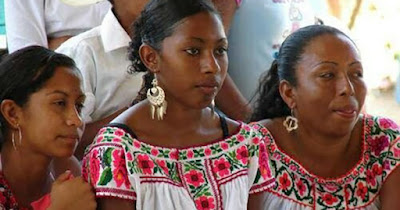The History of Afro-Mexicans -- A Population of 14 Million That Can't Be Ignored
Afro-Mexicans have deep cultural roots in Mexico, but have been overlooked for centuries by their own country because they are a relatively small population. However, their cultural and historical contributions to Mexico cannot be ignored - not to mention their presence in the country in modern day.
Why Black Mexicans were all but forgotten
In 1521, Spain conquered the Aztecs and Mexico became a Spanish colony, and Spain ruled for more than 300 years. During that initial period of colonialism in the 1500s, the slave trade brought about 200,000 West African slaves to Mexico.
Black slaves were used as foremen by Spanish, and many of the men went on to marry indigenous woman. Because of the mixed bloodlines, indigenous communities were formed with mestizo people and Mexico quickly forgot about their forefathers.
During post-Mexican revolution, the situation made forgetting about the Black Mexicans even easier because European and indigenous bloodlines were brought to the fore as sources of national pride.
Afro-Mexican contributions
Cultural contributions of the Afro-Mexican people, however, live on throughout the country through their various expressions of art including dance and music, which helps to preserve their roots.
There are even Afro-Mexican musical instruments that still exist like the guijada (a percussive made from donkey jawbone) and the bote (a friction drum). These are used in a genre of folk music called "son jarocho".
Their religious influence can still be seen in places like Costa Chica, an area along the south coast of the state of Guerrero. A dance called the Danza de Los Diablos (Dance of the Devils) is a clear example of Afro Mexican traditions that are still visible. Historians confirm that the origin of this traditional dance was started in the viceroyalty or colonial era, and was a ritual dedicated to the African god Ruja to whom slaves asked to be freed from the Spanish yoke.
In modern day, there is an Afro-Mexican dance troop called Obatala that travels and performs throughout southern Mexico. Through their performances, they express their pride in their African heritage and stay connected to their roots.
Current problems with identity and marginality
Like many other European colonialists, the Spanish Empire classified people according to their color of skin to organize a stratified social system. Until today, the devastating effects of that still exists.
Currently, there are almost 14 million Mexicans of African descent in Mexico, most of them living in the Mexcan states of Veracruz and Oaxaca. But they are a minority as the country's total population is more than 129 million.
But, Afro-Mexicans are statistically far more likely to live in poverty, and some Black Mexicans are still being challenged by authorities regarding their identity and nationality.
Trending

Martin Luther King, Jr. Was Arrested 29 Times For These So-Called Crimes
November 03, 2019

The First Americans Were Black Indians of African Descent
November 20, 2019

Meet the Black Inventor Who Created the First Digital Cell Phone
November 06, 2019

Who Was Jim Crow? Was He a Real Person?
January 26, 2020
Most Popular Posts:
You May Also Like:

The First Americans Were Black Indians of African Descent
November 20, 2019

Martin Luther King, Jr. Was Arrested 29 Times For These So-Called Crimes
November 03, 2019
Also Check Out:

Martin Luther King, Jr. Was Arrested 29 Times For These So-Called Crimes
November 03, 2019

The First Americans Were Black Indians of African Descent
November 20, 2019









